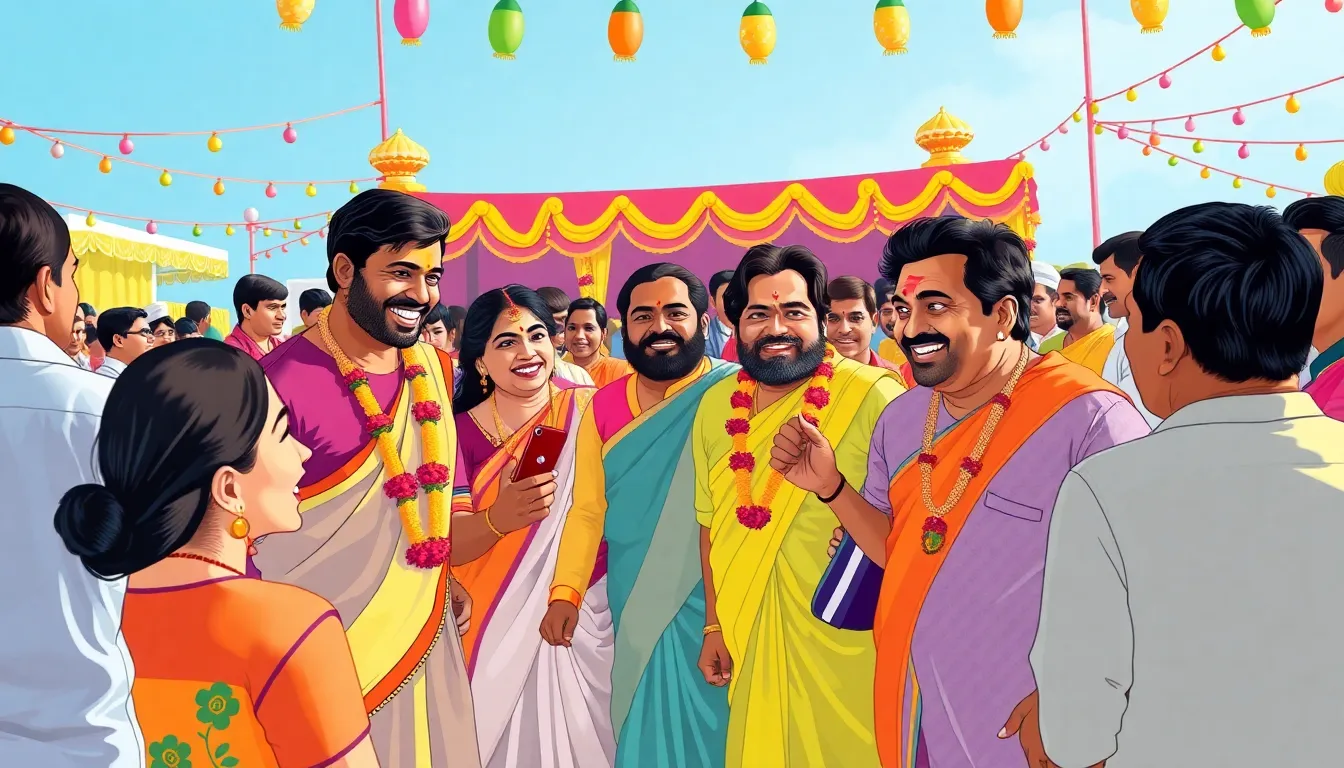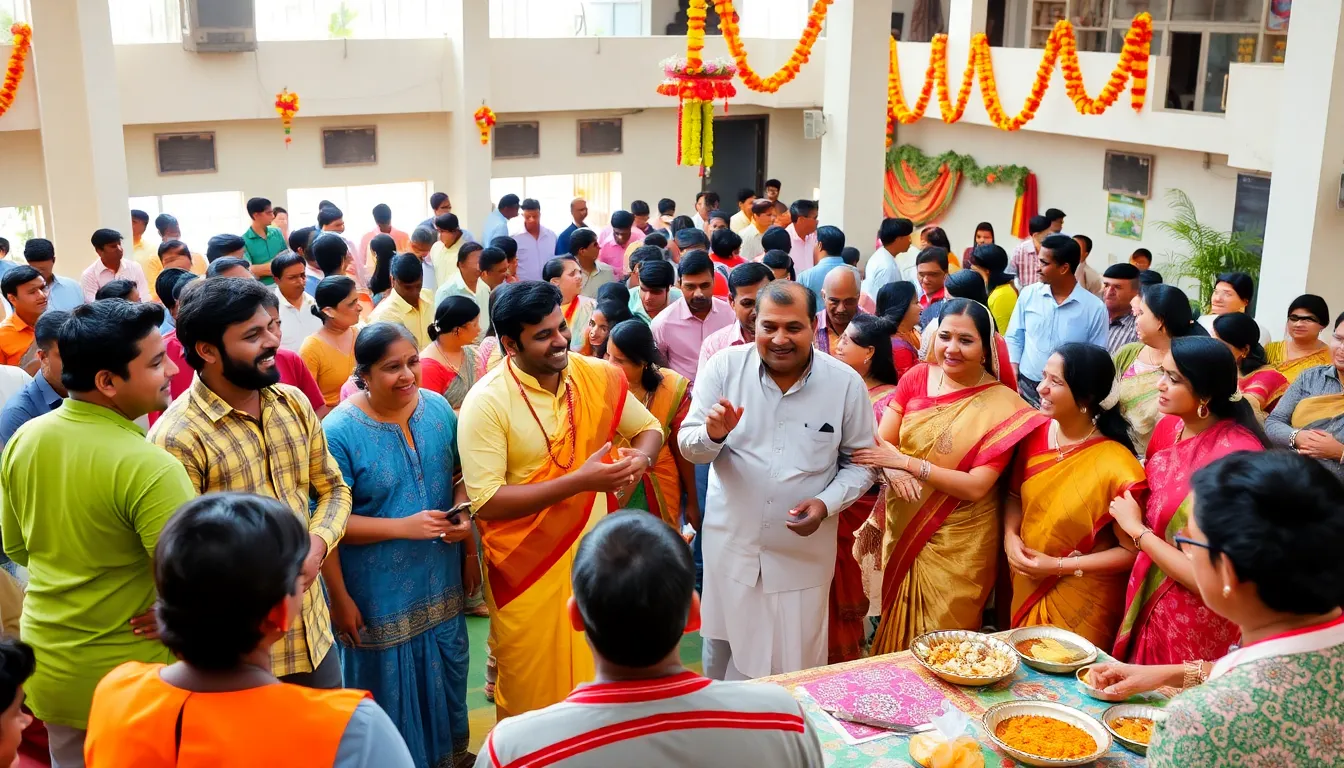In the vibrant tapestry of Indian culture, “vettakarikal” stands out like a quirky thread that sparks curiosity and laughter. This fascinating tradition, often shrouded in mystery, combines humor with a touch of the unexpected. Picture this: a gathering where the mundane meets the absurd, and everyone’s in on the joke. It’s not just a practice; it’s an experience that invites participants to embrace their playful side while connecting with their roots.
Table of Contents
ToggleOverview of Vettakarikal
Vettakarikal represents a lively and humorous Indian tradition, fostering connections among participants. This unique practice often involves playful exchanges, where wit and creativity shine. Participants engage in lighthearted challenges, incorporating traditional elements that highlight cultural significance. Humor plays a key role in making the gatherings memorable and enjoyable for everyone involved.
The tradition is characterized by its emphasis on community. Friends and family come together, enjoying an atmosphere rich in laughter and camaraderie. Each gathering typically features a variety of activities, encouraging interaction and engagement. Individuals showcase their talents through skits, games, or funny anecdotes, contributing to an entertaining environment.
Cultural roots remain a strong focus within Vettakarikal. Many elements reflect local customs, folklore, and traditions, enriching the experience for participants. This connection to cultural heritage enhances the depth of the gathering, allowing individuals to appreciate their roots while having fun.
Vettakarikal’s charm lies in its spontaneity. Organizers often keep plans flexible, fostering an unpredictable and exciting experience. This element of surprise adds to the enjoyment, as participants never quite know what to expect next.
Overall, Vettakarikal stands out as an engaging cultural expression, blending humor and community interaction. Its ability to create a joyful atmosphere makes it a cherished tradition that strengthens bonds among participants while celebrating Indian culture.
Historical Significance

Vettakarikal holds deep cultural roots within Indian tradition, revealing a rich tapestry of social interaction. This practice celebrates humor while fostering community bonds among participants.
Cultural Origins
Vettakarikal traces its origins to regional festivities where humor plays a pivotal role. Local folklore, storytelling, and ancestral traditions contribute to the vibrant tapestry of this practice. Traditionally, it has served as a platform for sharing experiences, showcasing cultural idiosyncrasies, and engaging audiences in laughter. Participants often draw from age-old tales that resonate with collective memory. Each gathering illustrates a unique blend of cultural influences, reinforcing shared identity and heritage.
Traditional Uses
Vettakarikal manifests in various community gatherings, serving as a key entertainment element during festivals and celebrations. Skits that reflect societal quirks often emerge as popular highlights of these events. Engaging activities, like interactive games and storytelling sessions, encourage participation and laughter among attendees. Local artists frequently incorporate this tradition into performances, enriching cultural events with humor and creativity. Additionally, Vettakarikal helps to strengthen interpersonal relationships by providing a setting where friends and families can connect through shared laughter.
Types of Vettakarikal
Vettakarikal features various forms, each adding its flavor to the tradition. Unique characteristics define these types, showcasing creativity and humor.
Common Varieties
Common varieties of Vettakarikal include skit performances and comedic storytelling. Participants often engage in improvisational comedy, allowing spontaneity to take center stage. Group games, like charades or trivia, encourage friendly competition and laughter. Many events incorporate local folklore, enriching narratives with cultural references. Additionally, musical interludes featuring humorous lyrics can elevate the overall atmosphere, creating a memorable experience.
Regional Differences
Regional differences highlight the diversity within Vettakarikal. Each locale adapts its practices based on cultural norms and values. For instance, Northern regions may favor storytelling influenced by their historical tales, while Southern areas focus on traditional folk songs with a comedic twist. Variations in language and dialects also contribute to distinctive styles of humor. Unique props and costumes enhance the charm, reflecting local artistry and creativity. While the essence of Vettakarikal remains consistent, these regional variations add depth to the tradition, making it truly unique.
Benefits of Vettakarikal
Vettakarikal offers numerous advantages that enhance both physical health and cultural engagement. Participants benefit through its rich comedic traditions and vibrant community spirit.
Nutritional Value
Vettakarikal’s unique activities often include various local foods. These foods contribute essential nutrients and promote a balanced diet. Participants enjoy a wide range of items, enhancing their social experience. Incorporating fruits, vegetables, and grains can boost energy levels and provide necessary vitamins. Many traditional dishes highlight seasonal ingredients, ensuring freshness and flavor. Engaging in community meals allows people to share recipes and cooking techniques, promoting culinary knowledge. Meals during Vettakarikal gatherings often incorporate local spices, adding health benefits by aiding digestion and enhancing flavor.
Medicinal Properties
Throughout history, elements of Vettakarikal have included traditional remedies. Many participants turn to herbs and natural ingredients utilized in local customs. These remedies often address common ailments, promoting overall well-being. For instance, turmeric and ginger play significant roles, known for their anti-inflammatory properties. Sharing these knowledge sets encourages community members to prioritize health naturally. An emphasis on using organic components ensures that participants stay connected to their heritage while promoting wellness. Engaging in such practices can reinforce cultural ties while enhancing individual and communal health.
Preparation Methods
Vettakarikal preparation involves methods that enhance the celebratory atmosphere. Creativity thrives in this tradition, where humor and cooking come together.
Cooking Techniques
Traditional cooking techniques shine in this vibrant practice. Steaming retains nutrients in local vegetables, while frying adds texture to snacks. Participants often utilize clay pots, which impart unique flavors to dishes. Grilling over an open flame infuses meals with a smoky essence that enhances enjoyment. Moreover, slow-cooking allows spices to meld, creating rich, aromatic dishes that delight all the senses.
Recipe Ideas
Several recipes reflect the spirit of Vettakarikal. Spicy vegetable pakoras serve as popular appetizers, inviting shared tasting among guests. Rice mixed with fragrant spices becomes a staple, often accompanied by tangy chutneys. A selection of local curries, featuring seasonal vegetables, showcases regional flavors. For dessert, traditional sweets made with jaggery and coconut provide a delightful end to gatherings. Each recipe contributes to the overall experience, fostering conversation and connection among participants.
Vettakarikal embodies the spirit of community and laughter within Indian culture. This lively tradition not only entertains but also strengthens bonds among participants through shared experiences. By blending humor with cultural elements, it creates a unique platform for storytelling and interaction.
The spontaneity of Vettakarikal keeps each gathering fresh and engaging, allowing for unexpected moments of joy. With its roots deeply embedded in local customs and folklore, it serves as a vibrant reminder of the importance of connection and creativity in everyday life. As this tradition continues to thrive, it enriches the cultural landscape and fosters a sense of belonging among those who partake in its festivities.



